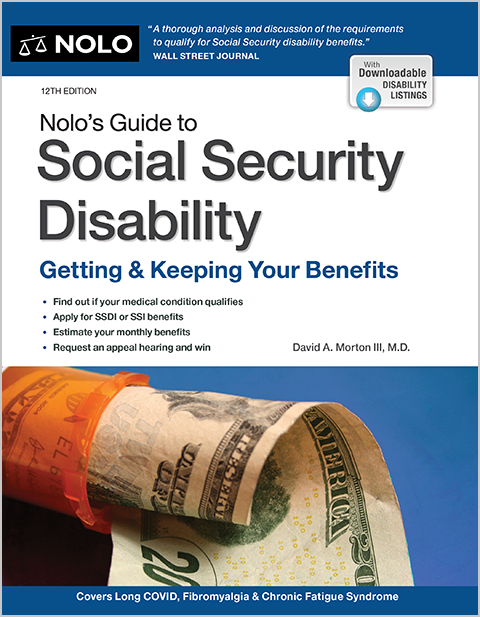Oregon’s Medicaid program might pay for long-term care for patients who can't afford to pay privately. Here are the eligibility rules.
Medicaid is a medical assistance program funded by the federal government and the Oregon state government to pay for, among other things, long-term care for people who meet certain requirements, such as being over 65, disabled, or blind. Oregon's Medicaid program, called the Oregon Health Plan (OHP), provides long-term care assistance for many Oregon seniors, but only in certain circumstances, which we'll discuss just below.
The eligibility rules for other OHP programs differ from those for long-term care coverage and are explained later in this article.
Long-Term Care Through Medicaid in Oregon
Oregon seniors likely to need long-term care (LTC) need to plan ahead to ensure they have a way to pay for their care, because the average monthly cost of a private room in a nursing home in Oregon surpassed $15,500 in 2023.
Oregon residents usually pay for long-term care with savings, long-term care insurance, or Medicaid. If you can't afford to pay using your own funds and you don't have long-term care insurance, Oregon's Medicaid program (the Oregon Health Plan), administered by the Oregon Health Authority (OHA), might cover your care.
How to Qualify for Medicaid Long-Term Care in Oregon
Patients who need to live in skilled nursing facilities or intermediate care facilities for 30 days or more can qualify for Medicaid benefits if both of the following apply:
- the Oregon Health Plan determines they need "institution-level care," and
- they meet specified income and resource qualifications.
When Is a Nursing Home Medically Necessary in Oregon?
If you're 65 or older, blind, or disabled and meet the Medicaid income and resource requirements, the Oregon Health Plan provides coverage for nursing home residents through the Oregon Supplemental Income Program-Medical (OSIPM).
To qualify for OSPIM coverage for nursing home care, you must be financially eligible and you must need the kind of care that nursing homes provide. In other words, living in a nusring home must be a medical necessity for you. (Or. Admin. R. 461-135-0750.) Nursing homes provide many care services, such as:
- 24-hour supervised nursing care
- personal care
- therapy
- nutrition management
- organized activities, and
- other services.
OHP will look at how limited your "activities of daily living" are to determine your eligibility for a Medicaid-paid nursing home. (The state defines activities of daily living to include things you must do every day to care for yourself, including activities like:
- eating
- bathing
- dressing
- using the restroom, and
- thinking and understanding (cognition). (Or. Admin. R. 411-070-0005(3).)
For more information or to apply for Medicaid, visit the Oregon Health Authority OHP web page. You can apply online through the state's Oregon Eligibility (ONE) website. Or call your local Oregon Department of Human Services (ODHS) office to apply.
Typically, your nursing care facility can assist you with Oregon's Medicaid application process. For other questions about the Oregon Health Plan and nursing home coverage, call OHP Customer Service at (800) 699-9075.
Medicaid Eligibility Income Rules in Oregon
In Oregon, to qualify for Medicaid-paid nursing home care, you can have a monthly income up to 300% of the federal benefit rate (three times the SSI payment level). Oregon's LTC income limits can be higher than the income limit for other health care benefits from Medicaid.
The 2025 federal benefit rate for a single person is $967. So, you can have a monthly income up to $2,901 in 2025 and qualify for Medicaid-paid nursing home care in Oregon. Note that any income you receive from any source is considered.
When both spouses are applying for Medicaid-paid LTC, the income limit doubles to $5,802 per month (in 2025). That's because Oregon doesn't count your spouse's income in determining your eligibility for OSPIM coverage for nursing home care, and your income doesn't count toward your spouse's eligibility. (Or. Admin. R. 461-110-0530(4)(c).)
The state doesn't count the non-applicant spouse's income to ensure the spouse living at home has enough funds to live on. Additionally, a non-applicant spouse is entitled to a minimum monthly needs allowance, which can range from $2,555 to $3,948.
If you qualify for Medicaid and live in a nursing home, you'll be expected to spend almost all of your income on your care. OHP allows nursing home residents receiving Medicaid to keep about $77 per month as a personal needs allowance—$90 if they receive a VA pension based on unreimbursed medical expenses. (Or. Admin. R. 461-155-250(4).)
Medicaid Eligibility Asset Rules in Oregon
Medicaid for long-term care has different resource rules—which you must satisfy to be eligible for coverage—than those for other Oregon Health Plan programs. Resources are assets like:
- real estate
- personal property
- life insurance with a cash value
- vehicles
- motorhomes
- boats
- bank accounts, and
- cash.
You'll have to total up all of your non-exempt, countable assets to determine how much you have in resources.
If you're single, you can have only up to $2,000 in assets with a few allowable exclusions, such as a car and your home (up to a value of $730,000 in 2025). If you're married, your non-applicant spouse at home can keep as much as 50% of your combined assets up to $157,920 (in 2025) worth of joint assets. (Or. Admin. R. 461-160-0580.)
Oregon Medicaid HCBS Waiver Programs, Assisted Living, and Home Care Options
Oregon residents can also qualify for Medicaid LTC services delivered outside of a nursing home facility setting. The state has programs with different eligibility requirements that offer certain other benefits so that seniors at home or in the community can obtain needed services.
Aging and Physically Disabled Waiver
Through the Aging and Physically Disabled (APD) waiver, Oregon provides waiver case management and transition services for eligible seniors and people with physical disabilities. This program is designed to assist individuals qualified to live in an institutional setting, like a nursing home, and receive nursing home care but who prefer to return to live in the community. The APD waiver offers recipients services, including:
- transitional services for one-time set-up expenses, such as:
- moving costs
- housing application fee assistance
- security and initial deposits
- purchases of household items and essentials, and
- other similar items
- case management, and
- wellness education.
Community First Choice Option
Under Oregon's K Plan, also known as the Community First Choice (CFC) Option, the state offers another alternative to institution-based nursing care and provides certain long-term home and community support to eligible individuals. This plan offers supportive services for individuals who require nursing home-level care and need benefits, such as:
- adult day care
- meal delivery and preparation
- help with activities of daily living
- home modifications, and
- other services that allow individuals to live outside of institutions.
For more information about the K Plan, you can contact the Oregon Department of Human Services.
Other Community-Based Programs
Oregon offers other related programs that can provide Medicaid recipients further flexibility and options for receiving and managing care outside of the nursing facility setting, including the Consumer-Employed Provider Program (CEP) and Independent Choices Program (ICP). Both CEP and ICP allow eligible seniors and adults (over 18) with disabilities to act as employers of and manage their care providers, who assist with certain daily living activities.
Oregon's Spousal Pay program pays non-applicant spouses to provide care to their in-need spouses, also including assistance with activities of daily living.
For more information about Oregon's CEP, ICP, and Spousal Pay programs, you can contact your local Area Agencies on Aging (AAA) or Aging and People with Disabilities (APD) office through the Oregon Department of Human Services (DHS). You can also call the Oregon Aging and Disability and Resource Connection (ADRC) at (855) 673-2372, or call DHS at (503) 945-5600.
Regular Medicaid Oregon Benefits for Seniors and People With Disabilities
In addition to long-term care and HCBS programs, the Oregon Health Plan (OHP) provides medical assistance to low-income individuals and families, helping them access essential health care services. Regular Medicaid Oregon benefits cover doctor visits, hospital care, prescription drugs, and dental services, and are available to:
- seniors (65 and older)
- children (under 19) and adults (19-64) with qualifying incomes, and
- people of all ages who are disabled, blind, or pregnant.
Oregon Medicaid Eligibility Income Limits
Oregon Medicaid eligibility income limits vary by category and are based on the federal poverty level (FPL) or the Federal Benefit Rate (FBR). For example, OHP Plus—Oregon's regular Medicaid program—covers children and adults, including seniors, with countable incomes up to 133% of the FPL and pregnant individuals and infants under age 1 up to 185% of the FPL. (Or. Admin. Ru. 410-200-0315.)
OHP also covers some individuals with incomes above these limits, such as children (through CHIP) and adults (through the OHP Bridge program), created through Medicaid expansion in 2024.
Some seniors qualify for OHP through Medicaid for the Aged, Blind, and Disabled (ABD) category, which has stricter financial rules. In 2025, ABD income limits are based on the FBR: $967 per month for individuals and $1,450 for couples.
Oregon Medicaid Eligibility Asset Limits for Seniors
Most adults age 19 to 64 applying for OHP Plus have no asset limit. However, seniors and people with disabilities applying through the Aged, Blind, and Disabled (ABD) Medicaid pathway must meet asset limits of $2,000 for individuals and $3,000 for couples.
These limits apply to countable assets such as cash and bank accounts. Certain assets don't count, including your home and one vehicle.
Qualifying for Oregon Medicaid Because of Disability
Oregon residents receiving SSI benefits automatically qualify for OHP Plus. Those without SSI can apply based on disability directly to the state.
For Medicaid eligibility, Oregon uses Social Security's definition of disability—a condition that prevents you from working that lasts or is expected to last over a year or result in death.
When applying based on disability, the Presumptive Medicaid Disability Determination Team (PMDDT) reviews your medical and non-medical records with your signed release. (Or. Admin. Ru. 461-125-0370(4), (5).) If your records aren't sufficient, the PMDDT can require a medical exam or test, which is covered by the state.
How Social Security Disability Decisions Affect Oregon Medicaid Eligibility
If Social Security denies your disability claim, the PMDDT generally can't decide on your OHP application until one year after that denial, unless your condition worsens or you develop a new disabling condition. If PMDDT approves your OHP and Social Security later denies you disability benefits, you can keep OHP benefits while appealing until you get a final denial by the Social Security Appeals Council. (Or. Admin. Ru. 461-125-0370(2).) If you're denied by the Appeals Council, your OHP Plus benefits would end.
How to Apply for Medicaid in Oregon: OHP Plus and OHP Bridge
You can apply for OHP Plus or OHP Bridge at any time—there is no specific enrollment period. Applications are accepted in person at Oregon Department of Human Services (DHS) offices, by phone at 800-359-9517, or online at ONE.Oregon.gov. The application is available in English, Spanish, and 15 other languages.
DHS must decide on your Oregon Medicaid eligibility within 45 days, or 90 days if you're applying based on disability. If denied, you can request a hearing by submitting a Request for Administrative Hearing (Form MSC 443) at your local DHS office or by completing an online hearing request.
Ready to create your will?


